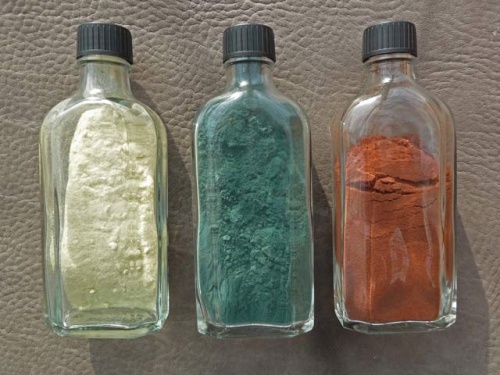Ecological leather care - Eco leather care
In the context of "leather care" it is often asked, whether "ecological leather care" or "bio leather care" products or methods exist. Such enquiries are generally made by manufacturers or vendors who offer products made of "bio leather" and would like a complementary range of care products.
What are "ecological products" or "bio products"? Usually these terms are related to food. "No pesticides", "fair trade", "pollutant-free", "biodegradable", "genetically modified material" are common terms in this context. Ecological products are also offered in the non-food sector, including cosmetics and textiles.
What is "ecological leather" or "eco-leather" or "bio-leather"? This involves mainly leather which is purely vegetable-tanned. The most common tanning method in the world is chrome tanning, which represents 85% of the total production. Most of the leather produced in the world is processed into shoes and the proportion of chrome tanning in the shoe industry is approx. 95%. In the case of clothing leather, the proportion is almost 100%. Furniture leather is about 70% and for car leather it is about 50%. This does not mean that 50% of the car leathers or 30% of the furniture leathers are vegetable-tanned. Usually, synthetic tanning is a common alternative. The actual national or international market share of vegetable tanning is not known, but will be negligible in comparison.
Synthetic tannin, Chrome III, Quebracho (vegetable tannin).
What could be an "ecological leather care" or "bio-leather care"? The leather care includes leather cleaner and leather care. Before maintenance, cleaning must always be carried out. The task of the cleaner is to clean the leather without damaging the leather or the user. The task of the leather care is to preserve the condition of the leather as long as possible or to improve non-existing properties. In the case of shoes, the leather should be waterproofed, or a fade-sensitive leather should be given an increased UV protection.
A manufacturer of care products has to question, if in addition to the various aspects that are already to be considered, the ingredients that can be replaced by ecological components. A leather care product which does not conform to the eco-standard, but which extends the life of a leather object noticeably, is possibly more ecological. If a product made of leather has to be renewed because it has been treated with a product which has a poorer preservation effect, the new production of the leather object could be much more significant in the consideration of the life cycle assessment than the use of a care product which is not ecological.
How to clean, repair and maintain leather
![]() -> COLOURLOCK - CLEANING, REPAIR AND CARE OF LEATHER
-> COLOURLOCK - CLEANING, REPAIR AND CARE OF LEATHER
![]() -> In German: LEDERZENTRUM - CLEANING, REPAIR AND CARE OF LEATHER
-> In German: LEDERZENTRUM - CLEANING, REPAIR AND CARE OF LEATHER
![]() -> Rest of the world: partners worldwide
-> Rest of the world: partners worldwide
Additional information
- Bio leather
- Basic rules when dealing with leather
- Leather care
- Leather care instructions - Home remedies
- Shoe care










 a kotori web solution
a kotori web solution